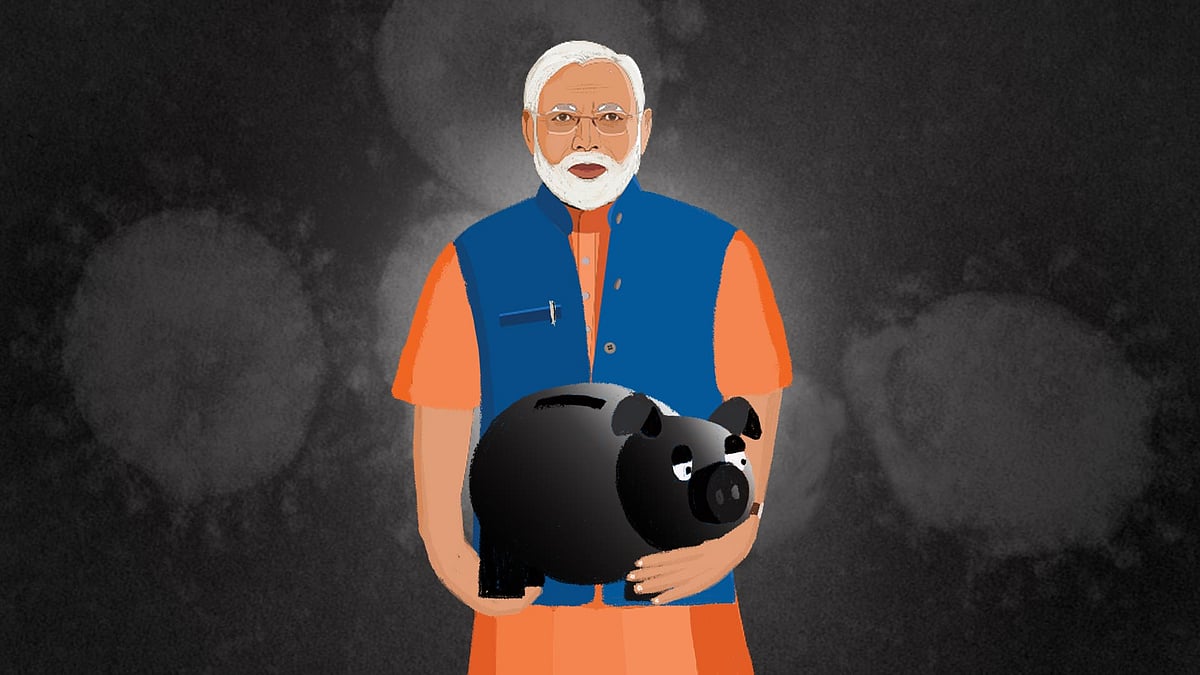With power grid concerns, Prime Minister Modi’s Sunday show hits a hurdle
Power bodies are nervously preparing for the event as the Centre assures calm.
On Friday, in his third address to the nation during the coronavirus pandemic, Prime Minister Narendra Modi said that citizens should switch off all the lights and light candles, lamps and torches for nine minutes on April 5.
“We have to awaken the energy of 130 crore Indians,” Modi announced, beaming with self-confidence. When Indians do this together, he added, they will feel the power of light and the resolve of the fight against the novel coronavirus.
Taking lessons from the Janta curfew, Modi stressed that no one should gather on the roads and streets on April 5 and, contra WWE, we must try this at home.
If you haven’t yet, watch the full address below.
But a day after Modi’s pronouncement, bureaucrats and politicians looked awkwardly at each other because of one unseen effect that this nationwide performance might have: a power grid collapse.
Turns out that the frequency of transmitted power is balanced through increasing or decreasing the power flow. If there is a fall in frequency, the flow goes up and vice-versa. But if there is a monumental shift in frequency — as might be the case on Sunday, when ecstatic Indians rummage out their candles and diyas — the power grid can collapse.
There’s a whole body to manage this process: the Power System Operation Corporation Ltd, or Posoco. This body overlooks small, regional dispatches that deliver electricity in their areas. “This sharp reduction in load and recovery, which is unprecedented, will need to be handled through hydro and gas resources," reads an advisory from Posoco to its dispatches.
The regional dispatches have alerted the smaller networks in the same vein. "It is estimated that in case of switching off the lighting there will be a sharp 3,000 MW load reduction phenomenon may occur in Uttar Pradesh in a very short duration of time,” wrote the UP State Load Despatch Centre. “Reduction in above mentioned load may also cause a high voltage surge in the UP Power Grid."
A MoneyControl report quoted a “senior executive in the power sector” who said that the move will be akin to “suddenly putting a brake of a car in motion, or suddenly pushing the accelerator to the floor”, adding: “It is difficult to predict how the car will exactly behave. It is the same predicament, but much more complicated, that we all are facing."
A former bureaucrat told the Economic Times that the grids are already balancing low demand during the lockdown with higher generation. “If not blackouts, the announcement can lead to anxiety among grid authorities in these challenging times,” he said.
Nitin Raut, the Maharashtra energy minister, offered the same reasoning, claiming that the demand for power has already decreased from 23,000 megawatts to 13,000 megawatts since all factory units stopped operations after the lockdown. “If all lights are put off at the same time, it can lead to a potential blackout, which will also affect the emergency services,” Raut said in a video.
However, the Centre has claimed that these concerns are “misplaced”.
A statement by the union power ministry said: “There is no call to switch off either street lights or appliances like computers, TVs, fans, refrigerators and ACs in the homes. Only lights should be switched off."
Anonymous sources propped this up. The Press Trust of India quoted “officials” who pointed out that this is not the first time when India will have a “voluntary blackout”. The report stated: “Such exercises have also been conducted during initiatives like ‘Earth Hour’. Another official said that power demand will fall by around 10 to 12 Gigawatts and will have no breaking on the stability of the national grid.”
Daily update
The government of India’s figure on the active cases of novel coronavirus stands at 2,650 as of 9 am today. So far, 68 have died and 183 have recovered.
A crowdsourced live tracker puts active cases at 3,132, deceased at 91, and recovered at 230 as of 6 pm today.
There have been signs of the curve flattening in Spain, which reported 809 deaths on Saturday, the lowest rise since March 26. Around 11,744 have died in the country so far. Germany's coronavirus death toll climbed to 1,275, increasing by 141 deaths in 24 hours. The country now has over 90,000 confirmed coronavirus cases, with a seven percent jump between Friday and Saturday.
The US reported a record 30,000 confirmed coronavirus cases in a day, adding to a total of more than 273,000 cases so far. The death toll in the country is over 7,000.
 Candle in the corona storm: Brace yourself for some TV news excitement
Candle in the corona storm: Brace yourself for some TV news excitement A black hole called PM Cares fund
A black hole called PM Cares fund